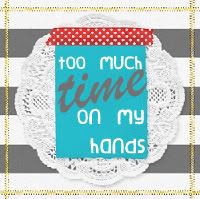We tend to underestimate the importance of cleaning toys.
Bath toys are subject to mold and mildew growth in any crack or crevice. Even though the toy spends time in the soapy water, germs still attack once the toys are removed. Check out some interesting suggestions using vinegar.
Cleaning Baby Toys:
Teethers, plastic and wood toys. Most all "hard" toys fall in this category. When your baby is in the "putting everything in the mouth" stage you'll want to wipe down her toys more often. The recipe is 1 cup of water + 1 cup of distilled white vinegar.
Mix together equal parts distilled white vinegar and water for a cheap toy cleaning solution. Put it in a spray bottle and just spray a little on a cloth and then wipe down the toys. The vinegar smell goes away completely after it dries and it doesn't leave any residue on the toys.
Cleaning Stuffed Toys:
Stuffed animals, fabric mats and fabric toys. Follow the washing directions on the tag for how to clean baby toys. However, if there are no directions or the tag is long gone there are still some gentle cleaning methods you can try. Washing Machine with Vinegar and Baking Soda - Yes, you can throw most fabric toys and stuffed animals into the washing machine and they'll be fine ifthe material and content is cotton or polyester blends. For heavily stained or soiled stuffed animals sprinkle them with baking soda and wash, adding 3 capfuls of white vinegar to the rinse cycle. Most fabric and stuffed toys can also be tumble dried on low.
Cleaning Wool Toys:
If your wool toy is "felted" you can simply wash it in the machine in a pillow case or net bag. If not, you need to take special care when washing. Spot cleaning is ideal, especially for things like Waldorf dolls or knitted wool stuffed animals. To spot clean, use a mild wool soap and a damp wash cloth and let air dry. For very heavily soiled wool toys you can also hand wash using a wool soap and then lay in a sunny window to dry. Do NOT tumble dry wool toys unless they have already been felted.
Cleaning Bath Toys:
Bath toys are subject to mold and mildew growth in any crack or crevice. Even though the toy spends time in the soapy water, germs still attack once the toys are removed. Using vinegar and water to clean the bath toys eliminates the bacteria that causes the mold and mildew to grow. The toys are ready for use by little hands and the spread of germs is decreased.
Remove soap residue from the bath toys by soaking in a mixture of 1 cup distilled white vinegar and 1 gallon of clean water. The alkalies in soaps are broken down and removed by the acid in the vinegar. Rinse the toys completely and place them on a clean surface to air dry.
Sources: eHow and howtostuffanimals
Sources: eHow and howtostuffanimals















No comments:
Post a Comment